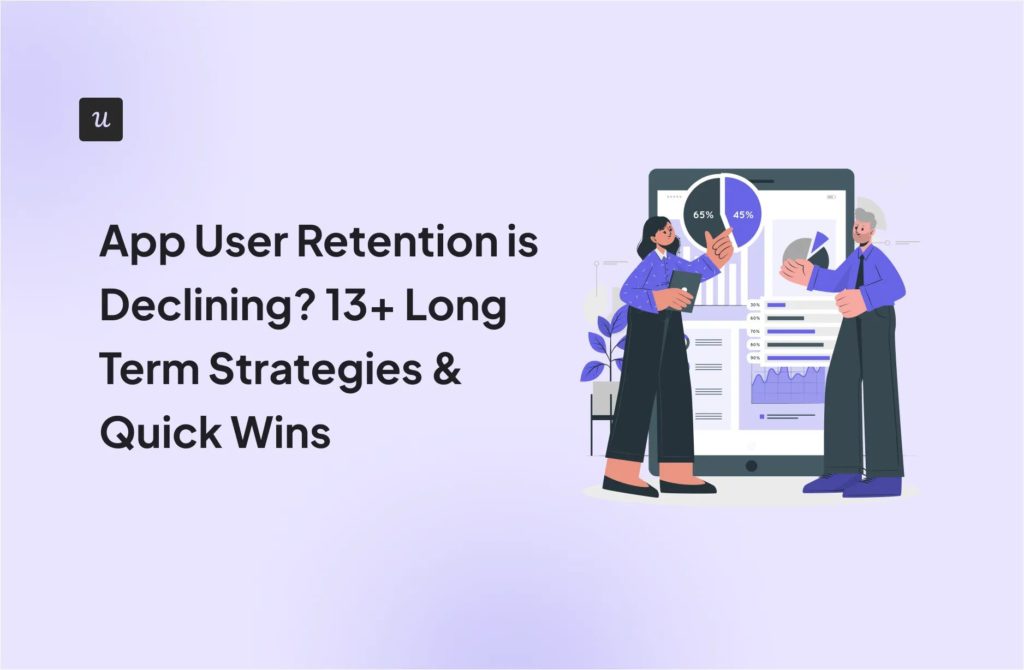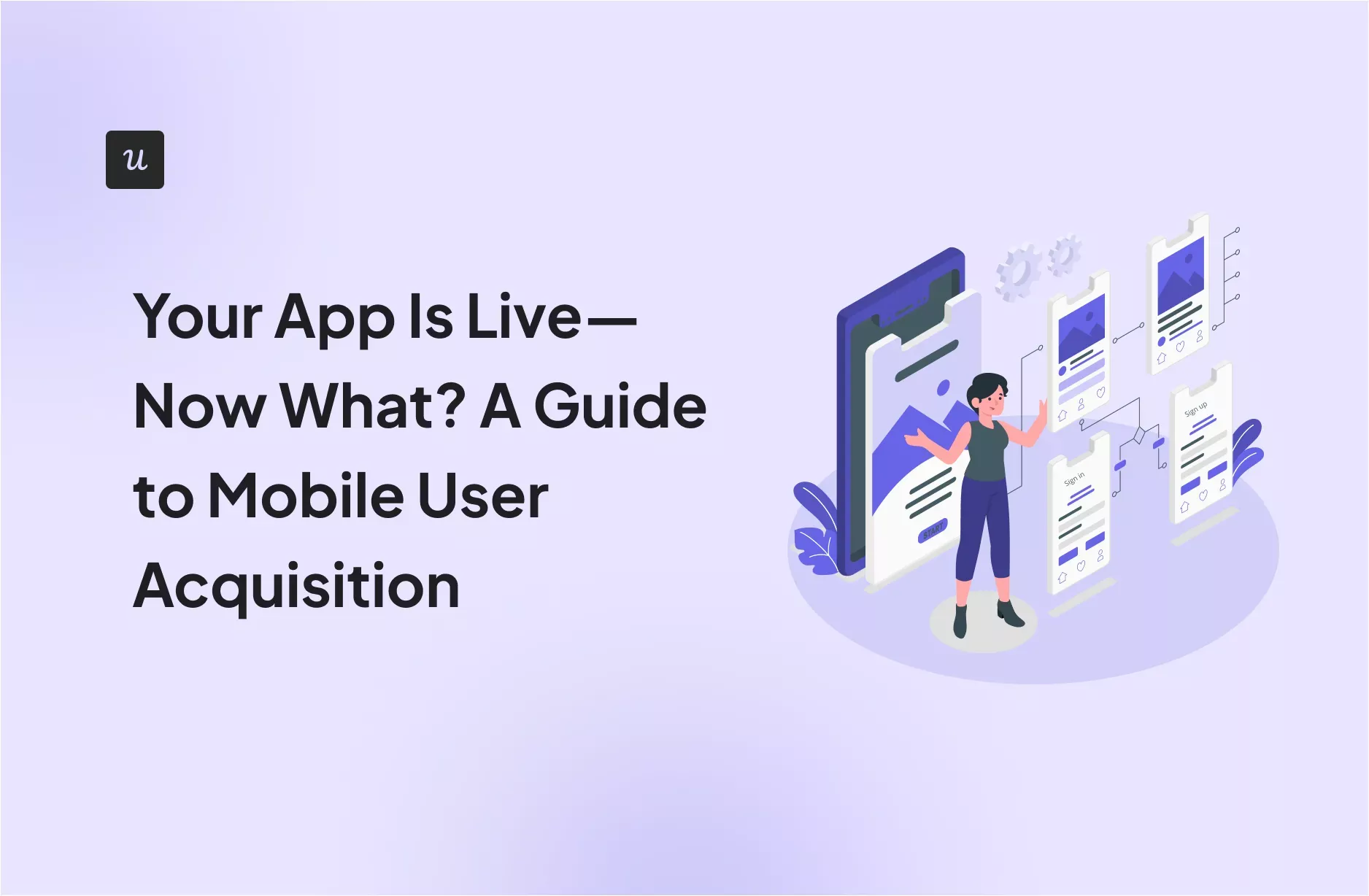![8 SaaS Growth Strategies to Drive Business Success [+ Examples] cover](https://blog-static.userpilot.com/blog/wp-content/uploads/2024/04/8-saas-growth-strategies-to-drive-business-success_75d06722fb2a9d142f24e38a8df83e4e_2000.png)
8 SaaS Growth Strategies to Drive Business Success [+ Examples]
Following the right SaaS growth strategies can make a difference in how your business evolves and survives.
But what exactly is a growth strategy? And what kind of growth model are you following right now?
Let’s explore the different types of growth strategies, how to create them, and multiple ways you can unlock product growth with real actionable strategies.
Get The Insights!
The fastest way to learn about Product Growth, Management & Trends.
What is a SaaS growth strategy?
A SaaS growth strategy is a comprehensive plan designed to increase a company’s user base, revenue, and market presence.
It can involve a mix of marketing tactics, product development, customer service excellence, and scalable business processes aimed at acquiring new customers, retaining existing ones, and expanding revenue through MRR growth.
Types of SaaS growth strategies
Not all growth strategies are made equal.
Although most SaaS businesses aim for product-led growth, many other growth models can also contribute to positive metrics such as sales, marketing, and technology.
Product-led growth
A product-led strategy emphasizes the product as the main growth driver. It means that the product is designed so users can easily discover its core features without assistance from sales or customer success teams.
A product-led mindset operates under the premise that if the product is good at satisfying the market’s needs, users will convert into paying customers when given a chance to experience the product value for free.

Product-led growth.
Sales-led growth
On a sales-led strategy, growth depends on big sales teams bringing SQLs (sales-qualified leads), nurturing them, and closing as many contracts as possible.
The sales-led growth model is mostly for enterprise-level products, where the person responsible for the purchase decision is not the person using the product (i.e. the user). These types of high-ticket deals can only be closed with a proficient sales team.
How to create a successful SaaS growth strategy?
Growing a SaaS is not straightforward at all. You need to follow a strategic approach that’s effective and provides you with feedback.
That said, let’s go over four steps for building a solid growth strategy.
Define your growth goal
Your first step is defining your strategic North Star.
What are you aiming to achieve with more growth? It could range from increasing market share to positioning your company as an authority.
A best practice for this is to follow a goal-setting framework like SMART (that stands for Specific, Measurable, Achievable, Relevant, and Time-bound) to align your goals with the results your business needs.
For example, a SMART engagement goal could be: “Increase MRR by 25% over the next quarter by revamping the product engagement strategy.”

Identify key metrics to measure growth efforts
To complete your growth strategy, you need to carefully select growth metrics to measure your success.
These metrics should align with your SMART goals and fit with your customer’s path. For instance, metrics like feature adoption rate and product stickiness are a good fit if your goal is to increase product adoption. Another example is to measure MAU, DAU, and feature engagement if your goal is to increase active users.
As a result, you can accurately gauge the effectiveness of your strategies and make data-driven decisions.

Plan growth initiatives and involve stakeholders
For this, you can involve other stakeholders in your company, such as the C-suite, investors, or even loyal customers, so they can contribute to the overall plan and its vision.
For instance, this session can involve breaking down each stage of your customer journey and then outlining the engagement strategies that best correspond with each stage. Another example could be creating personalized emails or loyalty programs to reinforce customer retention and advocacy.
Once the tactics are planned, scheduled, and assigned, you’ll get a solid strategy you can execute immediately.
Analyze your growth strategy impact and iterate
Since your business growth relies on how your users achieve success with your product, product analytics are a must.
With analytics, you can monitor which features are being used, spot behavior patterns in specific segments, and know if users are getting value from your product.
For example, you could monitor the usage patterns and behaviors of power users to identify the happy path, or to compare the effect of a specific growth strategy. Then use this information to build a replicable process that other users can follow to achieve similar success.

Examples of growth strategies for SaaS companies
As you go through the process of creating a growth strategy, you may feel lost at step three as you run out of initiatives to follow.
That said, let’s go over 8 growth strategy examples that you can apply in a SaaS company:
Increase customer acquisition efforts with paid campaigns
Although achieving a positive ROAS from a paid ads campaign takes expertise and constant iteration, it can quickly put you in front of your customers, increase acquisition, and give you momentum.
That’s why it’s a great example of a growth strategy, because it puts your business on the road to becoming profitable.
For this:
- Have a clear target audience by segmenting your user base and creating buyer personas.
- Position your product with the right Unique Selling Proposition (USP).
- Start by targeting your ads to people who are actively buying products in your category (e.g. those searching for “SaaS analytics tools” on Google).
- Test multiple messages, images, and formats in your ads and stick with the tactic that generates more click-throughs, leads, or conversions.

Host product webinars to reach target audience
Hosting webinars is an underrated strategy to connect with the right audience and attract valuable customers to your business.
For example, let’s say you’re launching a new feature that’s highly relevant for a specific user segment (e.g., unsatisfied users). You can take it as an opportunity to host a webinar where they can learn how to use the new feature effectively.
For this, think about the most pressing problems your target audience faces every day, what their most regular JTBDs are, and the resources they need to succeed in their career. Then come up with topics that are of high interest to them (perform thorough customer research for this), and start inviting people to join your webinar for said topics.
When done well, it will attract potential customers who otherwise would’ve never considered your brand, as well as prevent many users from churning due to misunderstanding your product.

Offer personalized experiences to maximize conversions
For any growth strategy, offering a personalized product experience is required to make users experience the value of your product fast.
For example, you can take advantage of welcome surveys to collect data and segment users based on their needs, use cases, JTBDs, and goals. Then, use said data to implement interactive walkthroughs and onboard users contextually—making it intuitive for users to understand what they have to do.
A personalized product is more engaging for the user and leads to a shorter time to value. Unlike generic product tours, targeted in-app guidance is less likely to be skipped and provides real value to the customer.

Implement growth loops to engage potential customers
Growth loops are a compounding cycle that can effectively attract customers to your business and self-generate more inputs. It consists of three parts that lead to compounding growth:
- Input. The strategies you use to acquire new users, such as ads, social, SEO on different search engines, email marketing, etc.
- Action. The process a user takes to get value from your product, such as testing it out for the first time or exploring new features.
- Output. The compounding effect you get from the user’s action. This is the key moment as it should continue to create more input to refeed the cycle.
An example of this is to ask users to invite teammates or friends to try your product after they’ve reached the activation stage (and experienced the value of your product). This simple tactic can lead users to bring more customers through word-of-mouth and restart the cycle.

Identify and remove friction in conversion funnels
Funnel analysis helps you optimize your growth metrics by pointing out exactly where users disengage.
For example, if you find out that users are stuck at the free trial stage, you can optimize the free trial experience to encourage more conversions.
For this, set up a conversion funnel that tracks the user journey from sign-up to paid conversion. Then analyze each friction point and find ways to get feedback on why it happens (this can involve reaching out to customers or looking at session recordings).

A/B test conversion prompts to gain more paying customers
One conventional way to increase growth is by A/B testing the timing, messaging, and design of your upgrade prompts.
This means creating two different in-app prompts with where one has, for example, a GIF tutorial and another with pure text, and determining which version has better results.
With A/B testing tools that support in-app flows (like Userpilot), you’ll be able to analyze the engagement performance of those versions such as time spent on each version, completion rates, and feature usage—as well as test continuously and improve your expansion strategy over time.

Understand how existing customers convert to optimize product experience
Path analysis provides a detailed view of the user navigation path after sign-up. This includes the steps that lead to a conversion and the path tends to make users steer off course.
So let’s say that you’ve got a great amount of recent signups. This analysis helps you understand how users adopt your product and design your onboarding flow to handhold users through the path that creates more customer success (and conversions).
To do this:
- Check user path analysis to identify common points of exit or confusion.
- Optimize onboarding content to ensure it effectively leads users toward realizing the product’s value.
- Test it out to see if it improves your website’s conversion rate.
- Find new rooms for improvements and repeat.

Incentivize customer feedback to build loyalty
For optimal growth, your product development must be completely customer-centered. This is not only for building loyalty but also for increasing customer lifetime value.
Thus, you need to collect feedback to understand how your customers feel about your product and find ways to provide more value (and close the feedback loop).
Thankfully, you can automate customer feedback by triggering in-app surveys such as CES (customer effort score), CSAT, and NPS. This way, you can measure how your customers feel across the customer journey and find opportunities for improvement.
For example, you can incentivize loyal users to leave a review on G2 by sending them a $100 gift card in exchange.

Conclusion
Although following SaaS growth strategies reduces expenses associated with running large sales and marketing teams, it’s not easy to achieve.
But since it motivates companies to build products that truly satisfy user needs and delight them in the process, it can be worth it.
Interested in driving product growth? Book a Userpilot demo to see how it can help.








